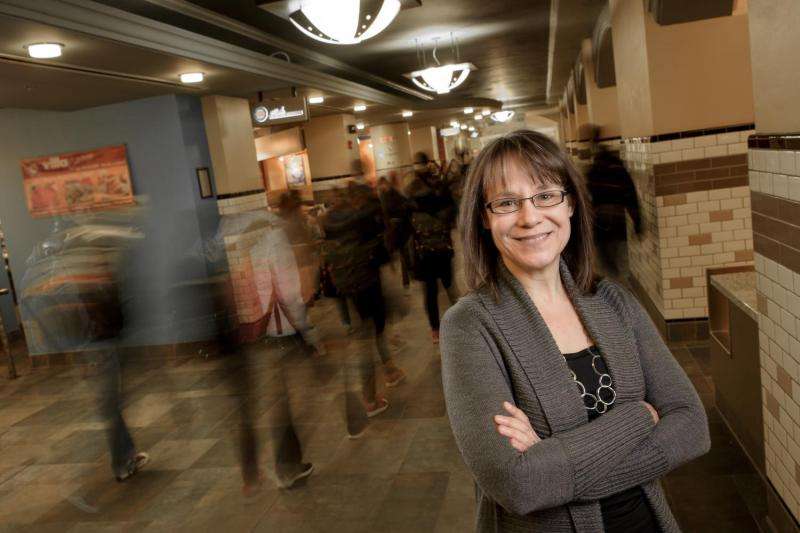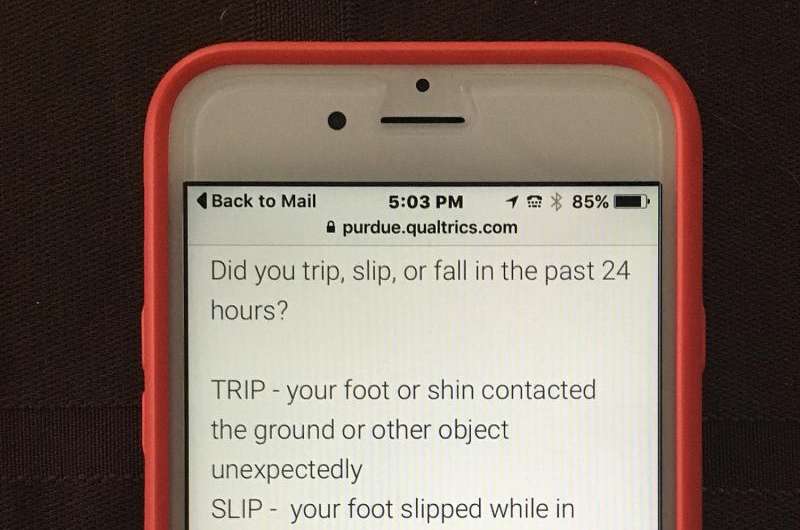Don't let youth trip you; more than 50 percent young adults fall, trip

Young adults fall more frequently than expected, and most falls occur during everyday activities such walking and talking, according to new research from Purdue University.
"The most commonly cited statistic is that one in three older adults falls each year due to age-related changes in balance, and in this four-month study, more than half of the college students fell during daily activities," said Shirley Rietdyk, a professor of health and kinesiology, who only looked at young adults in this study. "The fall rate may be lower for older adults because they are more cautious due to the higher risk of serious, even fatal, injuries from falls. These findings also highlight that walking on two legs is a challenging task that is mechanically unstable, even for young, healthy adults."
The findings are published in Human Movement Science and are based on data collected from 94 undergraduate college students via a daily online survey about any slips, trips or falls in the past 24 hours. The students' average age was 19, and the response rate was 93 percent.
Each student averaged one slip or trip a week, but they recovered their balance for most of these perturbations. Fifty-two percent of the participants fell at least once during the four months, and 21 percent fell more than once. Sixteen percent of the falls resulted in injury, and 4 percent required medical treatment. Also, one-third of the falls happened indoors, and the fall rate was still high when winter weather conditions were excluded. While physical activity did not distinguish fallers from those who didn't fall, falls were more frequent as the physical activity level increased.

The study also examined other factors related to falls, such as substance abuse, which was attributed to 9 percent of the falls.
"The most common multi-task associated with falling was talking to someone while walking," Rietdyk said. "Despite recent research showing an increase in injuries due to texting while walking, only 3 percent of falls resulted from texting while walking in this study. This is likely due to the fact that people texting are more likely to be injured from walking into or in front of things, which may not result in a fall."
According to the Centers for Disease Control and Prevention, falls are the third leading cause of unintentional injuries for ages 18-35, but how often young people fall has not been well documented.
"We have all heard the expression, 'He can't chew gum and walk at the same time,'" Rietdyk said. "Similarly, we expect that talking while walking would be automatic. However, this multi-task is cognitively demanding, requiring the simultaneously management of language formulation, speech generation, terrain navigation, and balance control."















